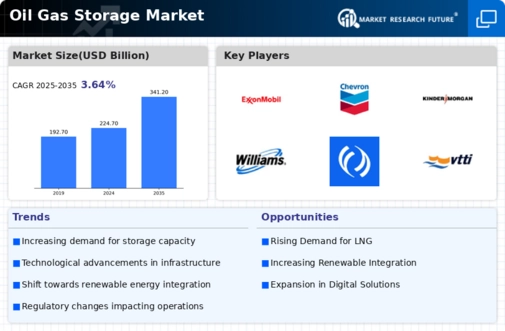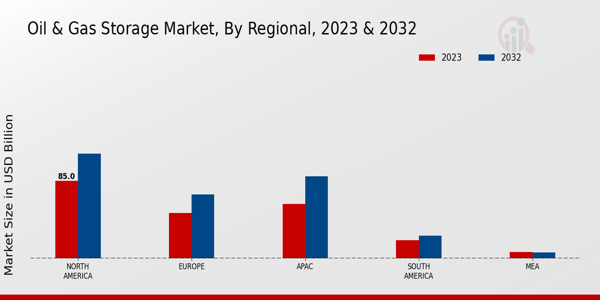Market Analysis
In-depth Analysis of Oil and Gas Storage Market Industry Landscape
The oil and gas storage market operates within a complex web of dynamic forces that significantly impact its structure and performance. At its core, market dynamics are shaped by the interplay of supply and demand factors, geopolitical events, technological advancements, and regulatory frameworks. The equilibrium between these elements determines the overall health and growth trajectory of the sector. The market for the oil and gas storage takes its shape due to supply and demand forces. The market is directly affected by the global energy demand that changes depending on economic situations, industrial related negations as well as geopolitical events. In the periods of economic boom, the demand for oil and gas increases hence the more storage capacity is required. On the other hand, economic recession leads to demand decrease and accumulation of more than required storage area. Geopolitical occurrences like disputes in oil imp producer areas, sanctions, and diplomatic issues bring uncertainty of whether this decision by the government will not affect the oil and gas storage market. This could cause a disruption in the supply chain which creates demand for storage other than market participants noting potential shortages. Furthermore, geopolitical forces shape investment choices and the strategic deployment of storage structures, which emanates into the entire market. Oil and gas storage facilities are also optimized in terms of efficiency & capacity through the advent of various technological developments. New storage tanks designs, automation, and monitoring systems provide the industry with advanced capabilities of handling large quantity volumes of hydrocarbons; raising standards of safety, and reduce the operational costs. The adoption of next generation technologies is both necessary condition and source of competitive advantage, for staying agile in changing economic environment. From the point of view of regulating institutions, domestic and international, they have major impact on the oil and gas saving market. Industry adapts the operational setting related to the environmental regulations, safety standards and government policies. The obedience of these regulations is not just a legal requirement but also a necessity both to gain the public trust and sustain the long-term stability. Various factors relating to the market dynamics of the oil and gas storage segment include storage reserves maintained by governments for strategic reasons. It is in such situations that these reserves act as a damper to the disruption of oil supply and emergencies, ensuring the proper stabilization of energy markets during the times of the crisis. Notably, the actions and policies of governments, concerning factors such as the size and governance of strategic reserves have far-reaching ramifications for the long-term storage systems market. Modern environmentally responsible approach became popular with the changing of the course by the industry itself during the latest years mainly focusing on the sustainable ways of the industry. The increasing realization about the phenomenon of climate change and demand for energy which is more cleaner are encouraging companies to invest in renewable energy which promotes the oil and gas market to embrace reforms. Companies are trying to implement eco-friendly technologies, minimize carbon footprints and add diversify the portfolios by aligning with changing consumer demands and international focus on sustainability.















Leave a Comment